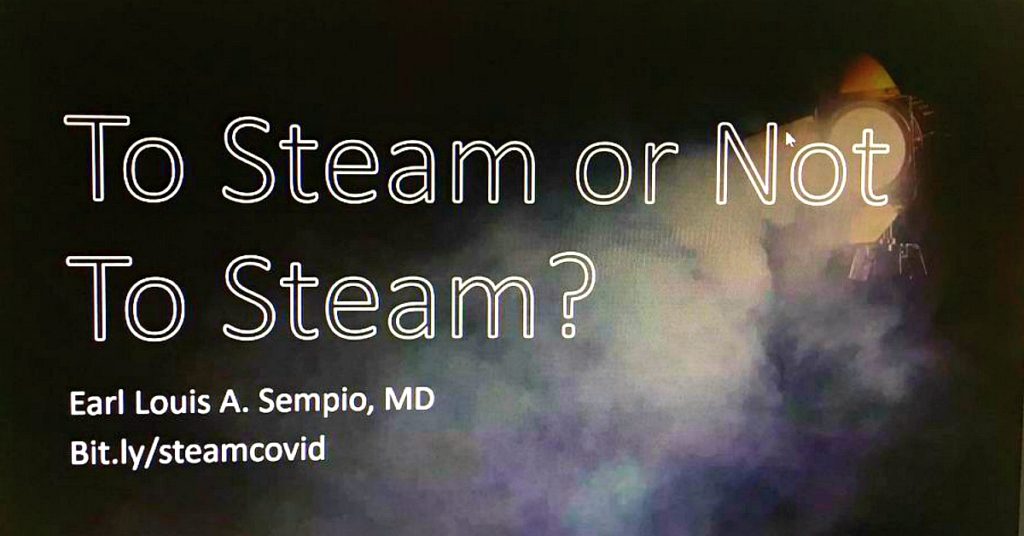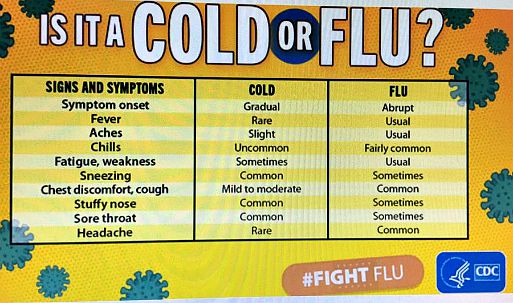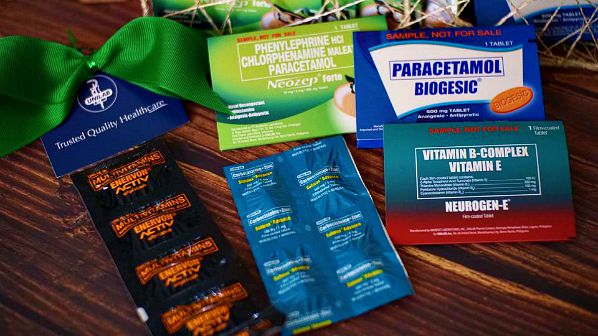Have you tried “suob” or “tuob” when you have colds or stuffy nose? Steam inhalation, tuob or suob is a very popular though somewhat traditional way that we Filipinos practice to find relief from colds or sinus infection. And since it’s still the rainy season, it’s very timely for us to get some information about this practice. As parents, we should have an open mind that not all health practices that were handed down to us should be accepted right away. As different persons have different health status, genetic makeups and medical histories, it will be wise to always know the pros and cons of any kind practice that are related to our health.
Unilab Inc. (Unilab), through its “Alagang Unilab: HealthierPH Series,” launched a virtual symposium that talked about the pros and cons of steam inhalation recently. Dubbed “To steam or not to steam: A discussion on Steam Inhalation as a Health Remedy,” pulmonologist and biochemist Dr. Earl Louis A. Sempio helped shed some light on the various misinformation surrounding the treatment modality.


Steam inhalation, tuob or suob in local parlance, is the process of inhaling water vapor to relieve stuffy nose brought by a cold or sinus infection. Some use it as a therapy for bronchitis or nasal allergies, while some resort to its effect when they have fever or flu.
The procedure involves lowering one’s head about eight to 12 inches away from hot water and inhaling slowly and deeply through the nose for at least two to five minutes.
Quick-relief but not a cure.“Steam inhalation is widely practiced, especially in homes, because of the relief that it gives a person who may be suffering from the common cold, nasal allergies, or sinus infections. These conditions bring nasal congestion that is very uncomfortable and makes it difficult for someone to breathe,” says Dr. Sempio.
While steam inhalation alleviates the symptoms of nasal congestion, Dr. Sempio stressed that it is not a cure as the steam does not address the virus that caused it.
The problem is when people feel better they get a false sense of security that they no longer need a doctor’s advice to address their condition. People often associate relief with cure, which is a mistake that can potentially hurt in the long run.

“Steam can make you feel better and so can a warm bowl of chicken soup when you’re under the weather. When you’re done with your soup, you start feeling better because the vapor from the soup helped decongest your nasal pathways.
“Water vapor or moisture does not necessarily need to be from a boiling pot of water. What’s important is to keep yourself hydrated; you need to drink plenty of fluids to replenish what is being lost.”
COVID 19 and other conditions. Amid the pandemic, Dr. Sempio strongly discourages steam inhalation for coronavirus patients.
“Steam inhalation loosens secretions, that’s why a COVID patient shouldn’t do it. It poses a great threat to everyone around the patient especially if he starts coughing in the middle of treatment.”
Various medical societies have already issued statements regarding steam inhalation for COVID 19 patients. One of them is the Philippine Institute of Traditional and Alternative Health Care (PITAHC).
Part of the statement reads: “Scientific studies suggest that steam inhalation is indeed effective against symptoms of colds and that it increases nasal patency… However, tuob/suob cannot be recommended as a standard care treatment for COVID-19 until it is proven by controlled clinical studies.”
The Philippine College of Physicians, Philippine Society of Microbiology and Infectious Diseases, and the Philippine College of Chest Physicians have likewise issued a joint statement saying: “Steam inhalation does not kill the virus and may cause potential harm. We cannot in good conscience endorse its preventive or curative measure.”
Apart from COVID 19, Dr. Sempio also discourages the use of steam inhalation with patients suffering from an infectious condition like Tuberculosis where the possibility of generating infectious droplets is high.
Dr. Sempio reminds everyone to seek a health professional’s opinion when it comes to addressing medical concerns, especially cough and cold. He then enumerates tips on how to prevent an infection and stay healthy.
“Prevention is always better than cure. First is hygiene because that’s the primary way of us getting the infection. If we’re worried about a viral infection, we usually get it through the secretions or the airborne particles.
“If you’re already sick, drink plenty of fluids, that’s number one. Second, you need to have rest, you have to have adequate sleep, adequate nutrition, and remove any form of abuse to the body.”
Lastly, Dr. Sempio acknowledges that many Filipinos are suffering from vitamin deficiency, which makes them susceptible to infection. Correcting malnutrition can greatly help in improving one’s immune system.

Alagang Unilab: HealthierPH Series is part of Unilab’s initiatives in reaching out to the public to provide relevant health information on primary healthcare and chronic conditions. For more information about Unilab, log on to their website at www.unilab.com.ph, or visit their Facebook or Instagram pages (@unilab). For inquiries and other concerns, you may contact the Unilab Consumer Care Center at +632-8-864522-1 (UNILAB-1) or [email protected].

